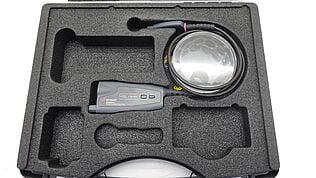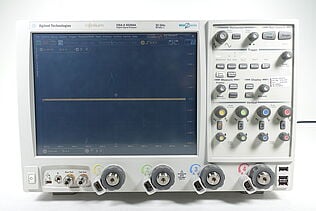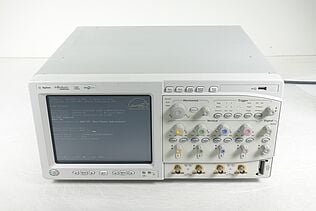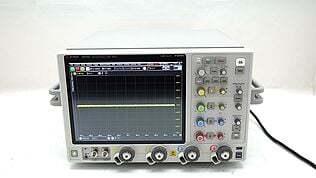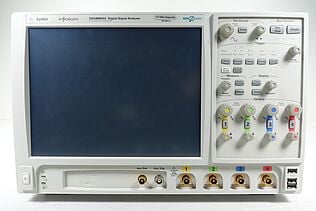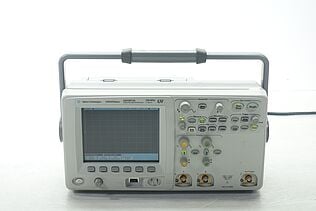- Introduction
- What is Timing Relationship?
- Types of Timing Relationships
- Sequential Timing
- Concurrent Timing
- How Timing Relationships Impact Electronic Systems
- The Role in Data Transfer
- Influence on System Speed and Efficiency
- Timing Analysis: A Critical Tool
- Why Perform Timing Analysis?
- Methods of Timing Analysis
- The Role of Oscilloscopes in Timing Analysis
- Importance of Oscilloscopes in Timing Analysis
- Key Concepts in Timing Relationship and Analysis in Electronics
- Conclusion
- Whenever You’re Ready, Here Are 5 Ways We Can Help You
Did you know that the flawless functioning of your favorite electronic gadgets hinges on something as fundamental yet often overlooked as timing?
This principle plays a pivotal role in ensuring that every tiny component within an electronic system communicates and collaborates with impeccable timing.
For electrical engineers and those in related fields, grasping the nuances of timing relationships is not just beneficial; it's essential for ensuring precision and top-notch performance.
What is Timing Relationship?
At its core, timing relationship in electronics refers to the synchronization of signal transitions or events within an electronic system. It's the orchestrated timing of electrical signals passing through the various components of a circuit.
This synchronization is vital for reliable and efficient electronic systems. By ensuring that components 'speak' and 'listen' at precisely the right moments, timing relationships directly impact the speed and accuracy of an electronic device.
Poor timing can lead to signal overlaps or miscommunications, resulting in errors or suboptimal performance. In contrast, well-managed timing allows faster data processing, more efficient power usage, and enhanced system reliability. This aspect is particularly critical in high-speed and complex systems, where even minute discrepancies can have significant consequences.
| Key Takeaway |
|---|
| Timing in electronics is key for speed and reliability. Good timing improves performance; bad timing causes errors. It's essential for smooth device operation. |
Discover the Exceptional Value: Refurbished Oscilloscopes from Keysight
Types of Timing Relationships
In electronics, timing relationships generally fall into two main categories: sequential timing and concurrent timing. Understanding these types is crucial for designing and troubleshooting electronic systems, especially in high-performance and complex applications.
Sequential Timing
Sequential timing refers to a scenario where one event follows another in a specific, predetermined order. This type of timing is akin to a well-rehearsed relay race, where the baton is passed from one runner (or component) to the next in a precise sequence.
- Importance in electronics: Sequential timing is fundamental in processes where the outcome of one step dictates or influences the next. For instance, in digital circuits like microprocessors, the execution of one instruction must complete before the next instruction begins.
- Applications: It's widely used in clock-driven circuits, where a master clock signal dictates the sequence of operations. It's also critical in applications like serial data transmission, where bits must be sent and received in a specific order.
Concurrent Timing
Concurrent timing, on the other hand, involves multiple events occurring simultaneously or overlapping. It's similar to an orchestra where different instruments play at the same time, each contributing to the overall harmony.
- Importance in electronics: This type of timing is crucial for parallel processing and multitasking, allowing different parts of a system to operate independently yet in sync. It enhances the efficiency and speed of complex systems, as multiple operations can occur without waiting for others to complete.
- Applications: Examples include multi-core processors, where different cores process different tasks concurrently, and digital signal processing (DSP) systems, where simultaneous operations on multiple data streams are the norm.
Both sequential and concurrent timing relationships are integral to the functionality and performance of modern electronic systems. Their proper implementation and synchronization make advanced electronics capable of performing complex tasks with high speed and reliability.
How Timing Relationships Impact Electronic Systems
The timing relationships within electronic systems profoundly influence their functionality and efficiency. This impact is particularly evident in two key areas: data transfer and the overall system speed and efficiency.
The Role in Data Transfer
1. Synchronization
- Crucial for communication: In any electronic system, from simple microcontrollers to complex computer networks, synchronization ensures that data is sent and received at precisely the right moments. Without proper timing, data packets might collide or be missed entirely, similar to a situation where two people are speaking at the same time and failing to understand each other.
- Sequence maintenance: For sequential data transfer, maintaining the order of bits or packets is vital. The correct timing ensures that the sequence of data remains intact from the source to the destination.
2. Error Reduction
- Prevents data corruption: Accurate timing minimizes the risk of data corruption. In digital communication, for instance, if a signal is sampled too early or too late, it might be misinterpreted, leading to errors in the transmitted information.
- Reliability in high-speed transfers: As data transfer rates increase, the margin for timing errors decreases. High-speed systems depend heavily on precise timing to maintain data integrity and avoid errors.
Influence on System Speed and Efficiency
1. Speed
- Direct impact on performance: The overall speed of an electronic system is directly tied to how effectively it manages timing. Faster systems rely on precise timing to ensure that each operation occurs at the optimal moment, reducing delays and increasing throughput.
- Enhanced processing capabilities: Precise timing in processors and computing systems allows for higher clock speeds and more efficient instruction cycles, leading to faster processing capabilities.
2. Efficiency
- Optimizes power consumption: Efficient timing can significantly reduce power consumption. By synchronizing operations, systems can avoid unnecessary processing and idle times, leading to more energy-efficient operation.
- Reduces processing time: Efficient timing also means optimizing the duration each component spends in active operation. This optimization saves power and reduces the overall processing time, allowing the system to perform more tasks within a given period.
The timing relationships in electronic systems are fundamental to their operational success. They ensure the accurate transfer of data, reduce errors and enhance the speed and efficiency of the system.
Timing Analysis: A Critical Tool
Timing analysis is an essential aspect in the field of electronics, acting as a critical tool for diagnosing and optimizing electronic systems. It is pivotal in the design phase and ongoing maintenance of these systems.
Why Perform Timing Analysis?
Performing timing analysis is crucial for several reasons. Firstly, it helps identify bottlenecks within a system, pinpointing slow or misaligned processes that can significantly impact performance. By locating these inefficiencies, engineers can focus their troubleshooting efforts more effectively, saving time and resources.
Secondly, timing analysis is key to optimizing performance. It allows for the adjustment of timings to enhance system efficiency, which can include reconfiguring the timing of signal transmissions or altering the operation of certain components. The objective here is to achieve optimal system speed and reliability while minimizing power consumption and delay.
Methods of Timing Analysis
Timing analysis is generally conducted using two main methods: Static Timing Analysis (STA) and Dynamic Timing Analysis (DTA).
- Static Timing Analysis (STA): This method involves computing the expected timing of a circuit without the need for the circuit to be powered up and run. STA is especially useful in the design phase, allowing engineers to predict and rectify potential timing issues before the hardware is fabricated. It is particularly effective for verifying the timing of digital circuits in complex integrated circuits like CPUs and GPUs.
- Dynamic Timing Analysis (DTA): DTA, in contrast, involves analyzing the timing of a system during its actual operation. This method offers real-time insights into how the system behaves under various operational conditions, including the impact of environmental factors like temperature changes. DTA is crucial for systems where operational conditions significantly influence performance, such as automotive or aerospace electronics.
Both STA and DTA play integral roles in ensuring the efficient and error-free operation of electronic systems. They are fundamental in advancing the capabilities of electronic systems in terms of speed, reliability, and efficiency.
The Role of Oscilloscopes in Timing Analysis
Oscilloscopes play a vital role in the practical application of timing analysis. These instruments are not just essential for testing and measuring, but are crucial in understanding and optimizing the timing relationships in electronic systems.
Importance of Oscilloscopes in Timing Analysis
- Visualizing signal timing: Oscilloscopes provide a visual representation of electronic signals, allowing engineers to observe the timing of these signals in real-time. This visualization is key to identifying timing issues like delays or mismatches in signal transmission.
- Precise measurement: They offer precise measurement capabilities, which are essential for accurately assessing the timing parameters of electronic components. This precision is crucial for both static and dynamic timing analysis.
- Troubleshooting and optimization: By using oscilloscopes to monitor how signals interact in a circuit, engineers can effectively troubleshoot timing-related issues and optimize the performance of the system.
- Versatility in applications:Oscilloscopes are used across various stages of electronic design and testing, from the initial development phase to ongoing maintenance and troubleshooting in operational systems.
Key Concepts in Timing Relationship and Analysis in Electronics
| Concept | Description | Relevance in Electronics |
|---|---|---|
| Sequential timing | Events occur in a specific, predetermined order. | Essential for processes where one step influences the next, like in microprocessors. |
| Concurrent timing | Multiple events happening simultaneously or overlapping. | Crucial for parallel processing and multitasking in complex systems. |
| Static Timing Analysis (STA) | A method of assessing timing without requiring the system to run. | Used in the design phase to predict circuit behavior and identify potential timing issues. |
| Dynamic Timing Analysis (DTA) | Involves analyzing timing during system operation. | Provides insights into system behavior under real operational conditions. |
Discover Keysight's Range of Certified Refurbished Oscilloscopes
Select up to 3 instruments to compare
Enable Notifications
In order to use this feature, you need to enable notifications.
Manage notification preferences
Conclusion
The timing relationship is a fundamental aspect of electronics, governing everything from data transfer and system speed to overall efficiency and performance. Key concepts like sequential and concurrent timing, coupled with timing analysis techniques such as STA and DTA, are crucial for understanding and optimizing how electronic components interact.
Tools like oscilloscopes, logic analyzers, and spectrum analyzers are indispensable in this endeavor, providing the necessary insights and measurements.
For professionals seeking to harness the full potential of these tools without overspending, the Keysight Used Equipment Store offers a practical solution. With a range of premium used oscilloscopes, spectrum analyzers, function generators, and multimeters, you can access high-quality equipment at a fraction of the cost.
Enhance your electronic systems' performance with the right tools – explore the Keysight Used Equipment Store today.

Whenever You’re Ready, Here Are 5 Ways We Can Help You
- Browse our Premium Used Oscilloscopes.
- Call tech support US: +1 800 829-4444
Press #, then 2. Hours: 7 am – 5 pm MT, Mon– Fri - Talk to our sales support team by clicking the icon (bottom right corner) on every offer page
- Create an account to get price alerts and access to exclusive waitlists.
- Talk to your account manager about your specific needs.










